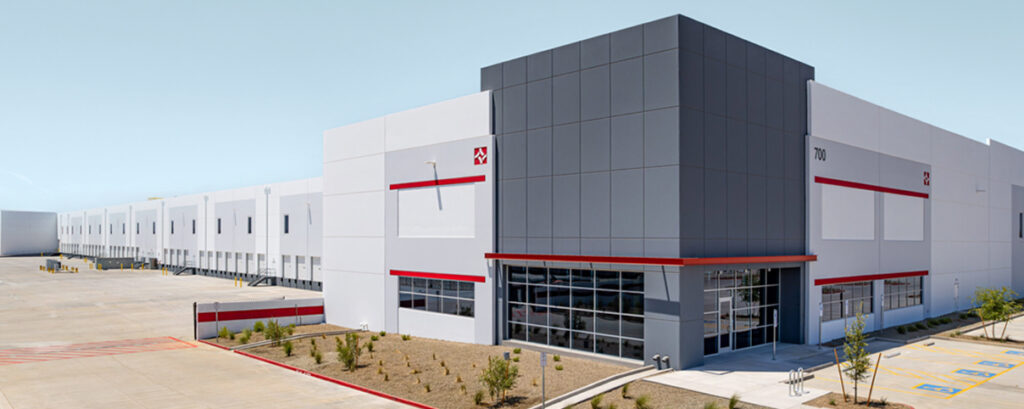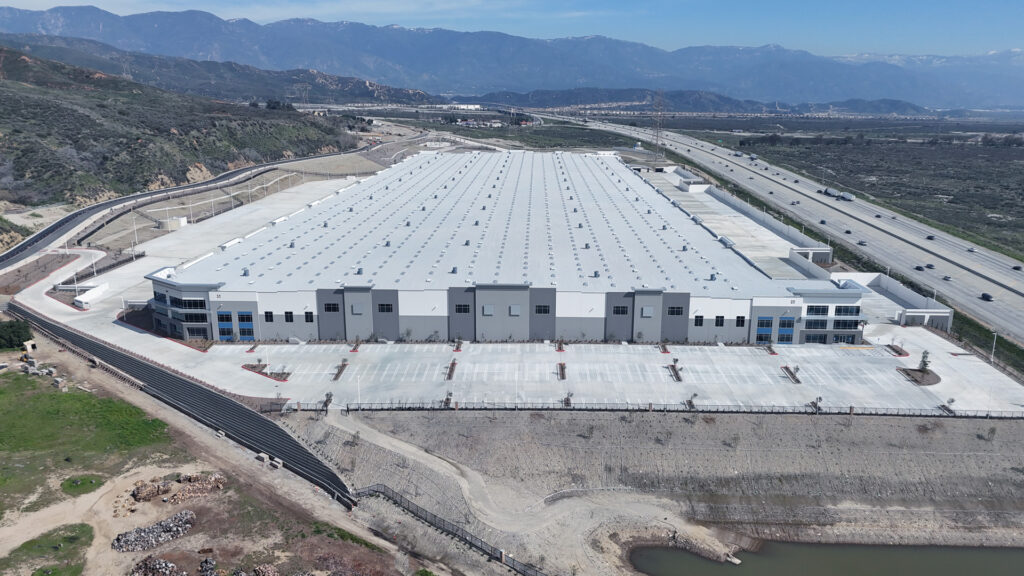“What’s ahead for the industrial sector” interview with Jon Pharris, originally published by Institutional Real Estate, Inc. on January 2024. Republished with permission.
Chase McWhorter, Institutional Real Estate, Inc.’s managing director, Americas, recently spoke with Jon Pharris, founder and president of CapRock Partners, about the state of the industrial sector. Following is an excerpt of that conversation.
What was the genesis of CapRock Partners? Have you always been focused on the industrial space?
The genesis of CapRock goes back to my undergrad years at Princeton University. In my junior year, I had an idea of starting a real estate company to acquire and develop industrial buildings — very similar to what CapRock Partners is today, in which we manage a series of funds to invest in and develop industrial real estate in the western and central United States. With that concept as my initial vision, I determined the business skills and experience I would need to have a proper foundation to start a company. I realized I needed experience putting together deals, so I started my career as an industrial real estate broker before receiving my master’s in real estate development (MRED) at the University of Southern California. After graduation, I worked at a value-added company that renovated commercial projects in California before I joined an industrial development company focused on entitling and building industrial projects throughout the Inland Empire.
Those intentional career stepping-stones enabled me to have the necessary toolset to start CapRock Partners with Pat Daniels and Jerry Pharris in 2009, in the midst of the global financial crisis (GFC). The onset of the GFC created a unique buying opportunity to acquire industrial properties or loans secured by industrial properties at a fraction of their intrinsic value, and we were positioned to exploit this price dislocation. During the early days of CapRock Partners, it was only Pat Daniels and me making cold calls to lenders who had nonperforming loans secured by industrial buildings, and also to potential capital providers to partner on acquisitions. Today, we oversee nearly $3 billion in assets under management or advisement with more than 50 team members in three offices. We always had the goal of managing institutional capital across the risk spectrum and are fortunate to have a broad investor base, including university endowments, life insurance companies, sovereign wealth funds, pension funds, hospital systems, family offices and other institutional investors. Through my business background with entrepreneurial companies, I tend to think in terms of creating value. My questions are always: How do we create arbitrage opportunities? How do we take advantage of market dislocations? Are we skating to where the puck is going and not where the puck is today? These types of questions have allowed CapRock to thrive regardless of economic climate.
How have you seen the industrial space evolve?
Since my graduation in 2002, the evolution of industrial real estate has been profound and touched nearly every aspect of the industry. Today, the industrial investment market is significantly more institutional than it was at the turn of the century, and, in my view, it will continue to become more institutional in this next economic cycle. Before the GFC, industrial real estate was a fragmented business since the asset values were low and there were limited barriers to entry. On the other hand, the majority of today’s investors are either institutional managers or family offices. The days of smaller, less-capitalized, noninstitutional companies are fading away, and sophisticated investment management companies will be in their place. In the long term, that’s a good thing because it should allow for less distress in the marketplace, as these institutional groups will have stronger balance sheets and more staying power in downturns.
From a tenant viewpoint, the sector has become more complex and sophisticated. Before ecommerce emerged, the typical industrial tenant required significantly less space. Twenty years ago, a 400,000-square-foot industrial building in the Inland Empire was likely the largest building in Southern California, but now CapRock is building speculative 1 million-square-foot buildings that are leasing to Fortune 500–caliber tenants. Some other building features that have changed in the past 20 years include clear heights increasing from 24 feet to 40 feet, a surge in power demands, accommodations for additional excess trailer-storage stalls, an expectation for solar panel–ready roofs, and other sustainable building features. Tenants will continue to have more stringent building specification requirements given the amount of capital the companies are investing in material-handling equipment (MHE) inside the building. Today, Fortune 1000 companies are regularly investing tens of millions of dollars into their facilities, robotics and manufacturing components.
How have you seen the different regions grow?
CapRock Partners is focused on two regions in the United States: the Western region and the Central region, with a specific emphasis on Texas. Twenty years ago, the Southern California industrial market had distinct tenant boundaries whereby tenants who needed space in Los Angeles County would not consider venturing into the Inland Empire. The industrial markets were narrow, and tenants stayed within artificial and complex geographic boundaries. Due to chronic low vacancy, today there’s a completely different geographical landscape. The Southwest industrial market, including Phoenix and Las Vegas, has melded into a single trade area, in which large tenants necessarily look to warehouse at any market in the broader Southwest region. Southern California, Las Vegas, California’s Central Valley and Phoenix are all viable options. We were one of the first groups to realize that the entire Southwest was becoming a single market for larger buildings, given the low vacancy and the lack of available land for future development. As a result of our viewpoint, we strategically expanded into Phoenix and Las Vegas and have become one of the pre-eminent value-added investors and developers in those markets.
Real estate fundamentals remain strong, but interest rates and the capital markets are impacting all asset classes. How do you consider these elements in your investment process?
Industrial real estate is unlike some of the other property sectors today in that it still has healthy property-level fundamentals, such as tenant activity, lease absorption, limited free rent and limited tenant-improvement (TI) allowance. The tenant demand is still strong in industrial real estate, and that is going to keep a floor on industrial real estate valuations. Industrial real estate demand spiked during COVID-19 and in the years immediately following the pandemic. While tenant demand has softened since those

unsustainable years, it is important to realize that 2023 net leasing absorption will likely be the third-best net industrial absorption in history. With all the doom and gloom in the press lately about real estate, it’s important to distill the noise. The third-best net absorption year in history is remarkable, given the macroeconomic climate, and that speaks well to the resilience of the industrial sector. That being said, investing right now is about patience and risk mitigation. There is uncertainty everywhere, but that uncertainty also creates opportunities for market specialists such as CapRock. In our view, the buying window is opening, but we are focused on being prudent investors, given all the macro headwinds.
What is CapRock’s house view looking to 2024–2025, from a macro perspective and specific to industrial real estate?
The house view from CapRock is that industrial tenant demand will remain consistent in 2024 but will continue to soften relative to recent peak absorption years. We believe infill locations will continue to outperform and that infill industrial will be one of the only asset classes to experience rental rate growth. Conversely, there will be pockets of stress where there has been too much supply amid softening tenant demand for certain size segments. Contrary to conventional wisdom, there is also the possibility that certain submarkets may experience modest rental spikes in 2025, since construction starts will be muted throughout 2024. We believe tenants will continue to upgrade their facilities to locations surrounded by better labor and transportation nodes, while buildings on the exurbs may experience slower leasing velocity.
From a capital markets perspective, 2024 may be the year institutional investors return to investing in quality industrial properties. Institutional investors ceased making commitments to funds midway through 2022, but many are starting to realize 2024 should be a great vintage year and thus will start investing once there is more clarity on inflation. Besides geopolitical risks, the wild card will be the 2024 U.S. election and the fact that investment activity typically experiences reduced flows before any U.S. election.
The higher cost of capital is a fundamental change that will reduce asset values, but it will be a slow process, as owners will be reluctant to accept the new values. Based on our experience during the GFC, the capitulation will take longer than many market participants anticipate, and many transactions will occur quietly. It is possible the United States will experience a soft landing, but with the higher cost of capital, it may still feel like a real estate recession for those who went on a buying spree fueled by short-term debt during the market peak. A realistic downside scenario is that we have higher rates for longer and a recession in 2024, slow tenant demand, lower lease rates, and many years without new construction. In this scenario, smaller developers and investors may not survive — a possibility that shouldn’t be ignored.
Where specifically are the opportunities, heading into potentially more turbulent years?
The opportunity set in 2024–2025 is going to vary by submarket. In some regions, the oversupply of certain building size segments will result in unsustainably high vacancy rates. In other cases, the buying opportunity may stem from broken capital structures with investors who have insufficient liquidity. Opportunities may also arise as a result of interest rate caps expiring, forcing lenders to sell. In addition, we anticipate a significant need for bridge or “gap” financing, especially for lower-middle-market investors. In the irrational exuberance of recent years, many investors believed the fallacy that industrial real estate would always increase in value and trees would grow to the sky. However, reality prevails, and real estate is still a cyclical business. In our view, 2024 will present a variety of compelling investment opportunities, but each will be different, so creativity and dry powder will be essential.
CONTRIBUTOR

Jon Pharris is co-founder and president of CapRock Partners, where he spearheads all acquisitions and dispositions for the firm’s investment funds and is responsible for all equity and debt across the company’s platforms. With his guidance, the company has successfully raised approximately $1.5 billion of equity in various structures across the risk-return spectrum. Upon full buildout of CapRock Partners’ current portfolio, Pharris will have successfully directed the firm’s acquisition and development of more than 35 million square feet of industrial in California, Arizona, Nevada, Utah and Texas.
COMPANY OVERVIEW
Founded in 2009 in Newport Beach, Calif., CapRock Partners is a fully integrated, privately owned investor and developer of industrial real estate in the Western and Central United States. Since its inception, CapRock has acquired, developed or entitled more than 35 million square feet of industrial real estate. As of June 30, 2023, CapRock owns more than 17 million square feet of industrial assets with assets under management of approximately $3 billion. CapRock has a team of more than 50 professionals across three offices in Southern California, Phoenix and Dallas/Fort Worth. CapRock manages a series of private funds with multiple targeted investment objectives. CapRock’s investors include domestic pension plans, university endowments, sovereign wealth funds, life insurance companies, family offices and other global investors.
Copyright ©2024 by Institutional Real Estate, Inc.
Material may not be reproduced in whole or in part without the express
written permission of the publisher.
###




